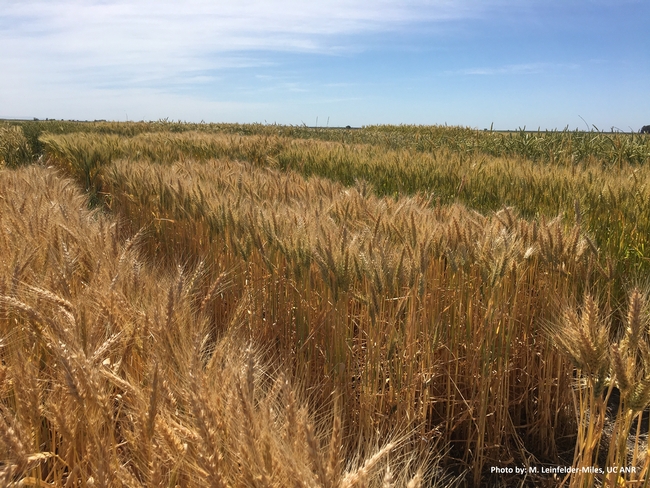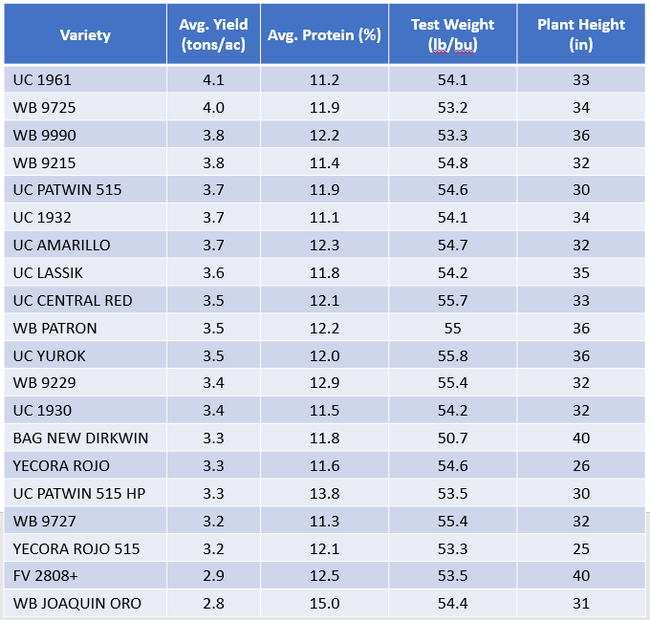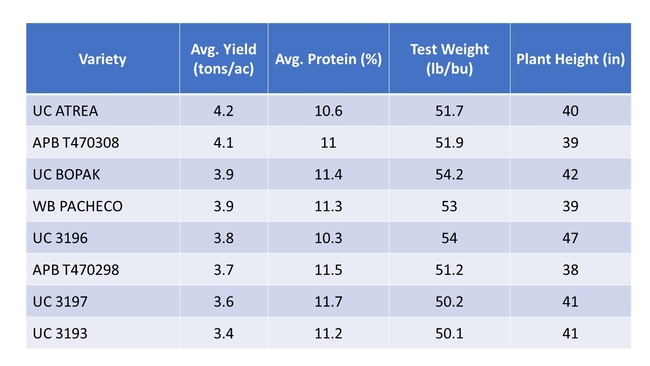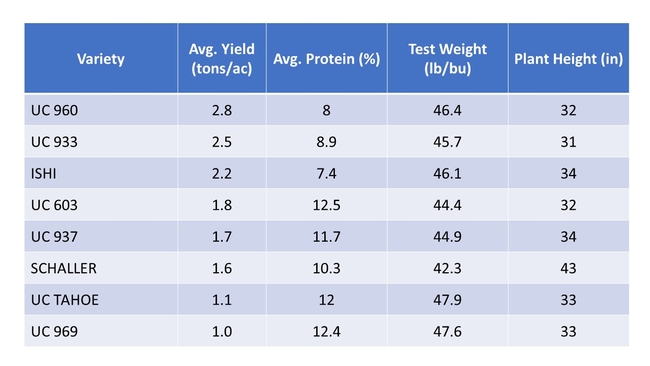
The Delta trial was on a Gazwell mucky clay soil, which has approximately 10 percent organic matter in the top two feet of soil. Approximately 25,000 acres in the Delta have the Gazwell classification. The 2021-22 season was characterized as being very wet from October through December, followed by very dry starting in January. An atmospheric river event dropped over six inches of rain at the end of October, according to a nearby CIMIS weather station, which delayed trial planting until December 1st. Over the course of the season, the site received approximately 10 inches of rain, and the site was not otherwise irrigated. The previous crop in the field was corn, and a pre-plant soil nitrate quick test indicated adequate nitrogen fertility at planting. The field received approximately 140 lb N/ac with in-season applications.
Under the 2021-22 conditions, the top-yielding wheat varieties (Table 1) in the Delta were UC 1961 (4.1 tons/ac; 11.2% protein), WB 9725 (4.0 tons/ac; 11.9% protein), and WB 9990 (3.8 tons/ac; 12.2% protein), and the top-yielding triticale varieties (Table 2) were UC Atrea (4.2 tons/ac; 10.6% protein), APB T470308 (4.1 tons/ac; 11.0% protein), and UC Bopak (3.9 tons/ac; 11.4% protein). The barley varieties were preferentially damaged by birds, and yields were impacted. Of what was left to be harvested, the top-yielding barley varieties (Table 3) were UC 960 (2.8 tons/ac; 8.0% protein), UC 933 (2.5 tons/ac; 8.9% protein), and Ishi (2.2 tons/ac; 7.4% protein). Please see the website for complete results.
Since environmental conditions vary from location to location and year to year, we advise making variety decisions based on aggregated data from three-year summaries. The results for the Delta best align with those from the Sacramento Valley. Thus, the Delta results are incorporated into the three-year summaries for the Sacramento Valley. The UC Davis team has developed web tools that allow us to view trial data in a more interactive way. There are two websites – one with the multi-year, multi-site summary data and another that summarizes each trial individually. We recommend using the multi-year, multi-site tool for variety decision making, and we suggest using these interactive tools on a computer, rather than a phone. Please reach out if you have questions on the trials or the web tools. Happy harvest, and good luck with your small grains crops this season!
Table 1. Delta common wheat trial results.
Table 2. Delta triticale trial results.
Table 3. Delta barley trial results. This trial had severe bird damage, and results shown are only for those varieties with sufficient yield to harvest.


